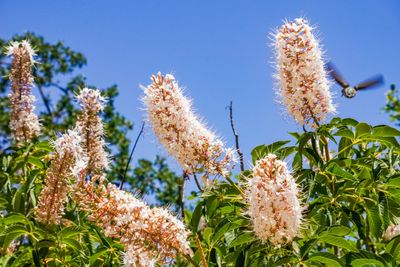California Buckeye Facts
California buckeye trees (Aesculus californica) are native to parts of California and southern Oregon. As a result of local growing conditions, this tree is specifically well adapted to growth in locations where there is little water or drought is possible. In fact, California buckeye trees are quite unique due to their summer loss of foliage. When the weather becomes hot in the summer, California buckeye trees may begin to drop their leaves as a means to survive difficult growing conditions. Lush growth will resume when temperatures have cooled, as the tree is among the first to begin to leaf out early in the growing season. Though fully mature trees do become quite large, the California buckeye is known for its low sprawling canopy. In the spring, the tree is filled with impressive, white, flower spikes that are attractive to hummingbirds and pollinating insects. This tree is an exceptionally good candidate for those wishing to add a stunning focal point to the home landscape. It should be noted that all parts of this tree are toxic, including the nuts. California buckeyes should never be eaten, as they contain several toxins which are harmful to both humans and animals.
How to Plant a California Buckeye
The process of growing California buckeye trees is relatively simple, as they require little maintenance once established. However, it will be imperative that conditions for growth are met. Trees will require a well-draining planting location that receives at least 6-8 hours of sunlight each day. For those wishing to grow California buckeye, the best course of action is to purchase transplants from local garden centers or plant nurseries. Transplants are most likely available in the tree’s native growing regions. Growing California buckeye trees from seed is also very easy. To do so, simply bury the seeds in a large seed starting container. To germinate the seed, place the container in a warm and sunny location. Keep the planting consistently moist. When transplanting the tree into the landscape, dig a hole at least twice as wide and twice as deep as the root ball of the plant. Place the plant into the hole, and then gently fill it with soil. Water the planting on a weekly basis until it has become well established. Beyond planting, California buckeye care is minimal. However, like most trees, it will benefit from routine pruning and fertilization.
